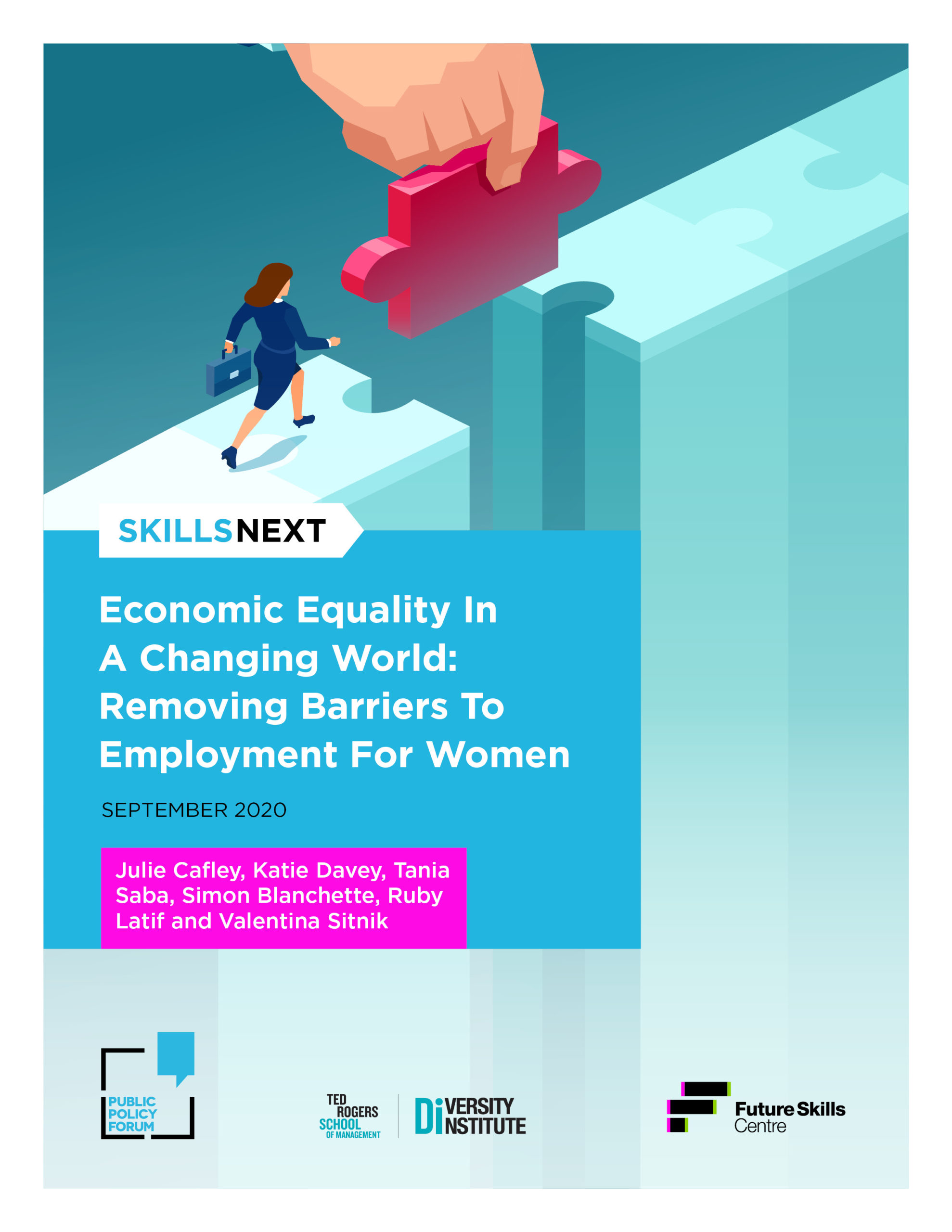
Economic Equality in a Changing World: Removing Barriers to Employment for Women
Series | Skills NextKey Takeaways
- The economic burden of COVID-19 weighs heavier on women. Women in dual-earning households have been more likely to lose their jobs as a result of the pandemic and less likely to recover them in early stimulus and re-hiring initiatives.
- Women’s lack of economic empowerment costs the economy anywhere from 10 percent of GDP in advanced economies to over 30 percent in South Asia, the Middle East and North Africa
- Higher education notwithstanding, Canada continues to have one of the highest gender wage gaps among Organisation for Economic Co-Operation and Development (OECD) countries. Other issues also persist, like the under-representation of women (1) in STEM (2) and management positions and (3) women’s slow access to entrepreneurship and business ownership.
Executive Summary
Along with technology and sustainability, inequality is one of the three dimensions that shape the economic landscape of the 21st century. Persistent inequality leads to marginalization, exclusion from growing economic sectors and erosion of the capacity for economic and social development.
Studies on the economic impact of gender gaps assume men and women are likely to be born with the same potential, but disparities in access to education, health care, finances and technology, along with legal rights and social and cultural factors, prevent women from realizing this potential.
The direct result is reduced productivity and lower economic growth. Women’s lack of economic empowerment costs the economy anywhere from 10 percent of GDP in advanced economies to over 30 percent in South Asia, the Middle East and North Africa. While Canadian women have made some progress in the labour market in recent decades, barriers to their full participation remain, thus significantly reducing the pool of talent available to employers.
Where there is equality, growth is stronger and more sustainable—the correlation is undisputable. Action is needed to alleviate gender barriers: Good intentions are no longer enough.
The first objective of this paper is to summarize existing research and take stock of prevailing issues surrounding gender inequality. Despite good intentions and policy interventions, the following issues persist:
- The wage gap
- The underrepresentation of women in STEM
- The underrepresentation of women in management positions
- Women’s slow access to entrepreneurship and business ownership
These are all well-documented factors that are interconnected and thus aggravated. We examine them in turn by highlighting the gender inequalities they generate and we present the most recent statistics as well as the explanatory determinants of these various considerations.
In portraying gender inequalities, we pay close attention to the intersectionality of the grounds of discrimination. Therefore, when available, other identity and socio-demographic characteristics such as race, immigration status, ethnicity, disability, mental health, age and income level are considered as they raise additional challenges and complexities.
The second objective is to focus on inequities made more salient by the impacts of the COVID-19 crisis and the related agreed measures that have stymied our economy and confined many families to their homes while also performing the vital function of limiting transmission of COVID-19. Many women face additional difficulties due to their over-representation in front-line work, including low-paid, precarious and care work. The overwhelming burden associated with the unequal distribution of support has further exposed women’s socio-economic vulnerabilities, with women in dual-earning households having been more likely to lose their jobs as a result of the pandemic and less likely to recover them in early stimulus and re-hiring initiatives.
Based on the findings of the first two objectives, the third objective is to present targeted initiatives to inform strategies to reduce gender inequalities and, in particular, to develop a research agenda on skills and employment that integrates a gender perspective.

Watch panelists from our event ‘Economic Equality in a changing world – Removing barriers to employment for women’ (Sept. 25) here.

Thanks to our partners
 |
 |








